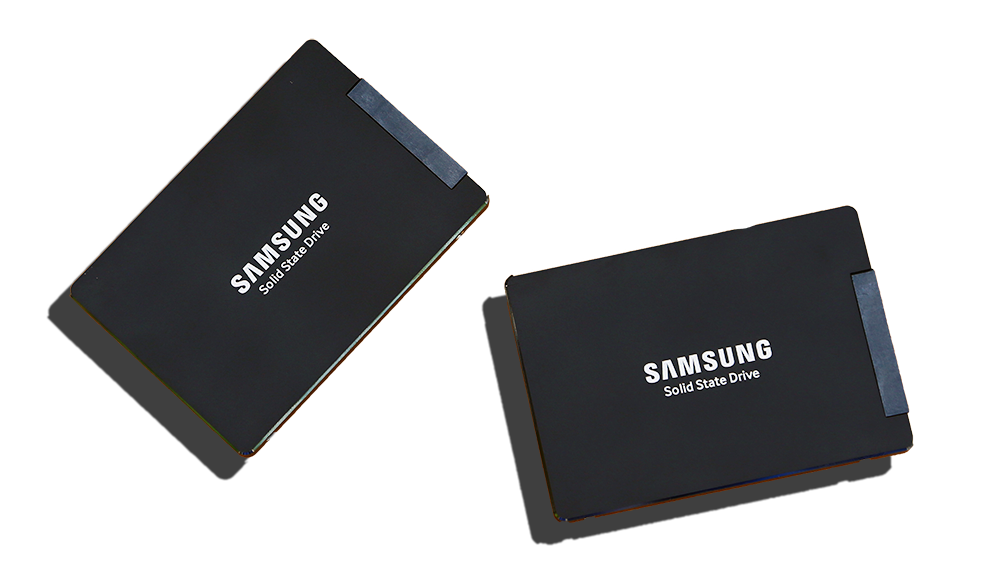At the 2014 Samsung SSD Global Summit, Samsung showcased its latest consumer SSD, the 850 PRO. Just like the 840 PRO before it, we loved the 850 PRO’s performance and technological advances. In fact, it is probably the best SATA 3 (6Gbps) drive on the market. As an enterprise reviewer, I expected the normal 6-12 month wait before the 850 PRO would spawn an enterprise cousin, as we have seen with the Samsung SM843 and 845DC EVO. That 12 month wait was closer to 12 minutes as Samsung surprised all in attendance with their announcement of the 845DC PRO, alongside the 850 PRO.
Unlike the 845DC EVO and 840 EVO where the two were almost identical, the 845DC PRO and the 850 PRO differ in pretty much every way. We will go into the differences in more detail in our next section, but under the hood, the 845DC PRO is decidedly ‘last generation’. The controller is from the 840 PRO while the NAND is first generation 24-layer 3D V-NAND, instead of the 32-layer solution in the 850 PRO.
What isn’t old is the performance. I mean, just take a look at the specifications below:
There are two figures that should absolutely jump out at you. The first is the random write IOPS, which is rated at 50K and 51K for the 400 and 800GB capacities, respectively. As we will show you later, those are not fresh out-of-box IOPS, but rather, are sustained indefinitely, steady-state IOPS. We are used to drives in this class getting 30-35K steady-state write IOPS, but not 50K.
The second gasp-inducing number is the 10 drive writes per day (DWPD) endurance rating. For the class of products Samsung is going after, 10 DWPD is fairly common. What isn’t common is how they got there. Typically, you get 10 DWPD by either using eMLC NAND (expensive) or by over-provisioning the drive by 50-100%. Getting 10 DWPD out of 2-bit MLC is almost unheard of, unless, of course, you are using 3D V-NAND, which is really what drives this product.
All of this performance is for not if Samsung can’t get pricing in line with the industry. Although Samsung hinted at $1.50-$2.00/GB at the SSD Summit, actual pricing is a bit higher. The 400GB model comes in at $960, with the 800GB costing $1830. At those prices, you won’t see Samsung undercut the competition, but based on those specifications, you will match, or exceed the enterprise offerings from most other companies. We are a little disappointed that the price of admission is almost $1000; having a smaller 200GB model for high-end workstations would have been nice to see.
 The SSD Review The Worlds Dedicated SSD Education and Review Resource |
The SSD Review The Worlds Dedicated SSD Education and Review Resource | 


There seem to be two errors in the images for the “Fileserver profile” and the “Webserver profile”. The names in those charts tell me that those results are for the 845DC EVO and not the 845DC PRO.
The “Fileserver profile” result looks like a typo (result is better then in the actual 845DC EVO test so this seems to be the 845DC PRO result).
The result of the “Webserver profile” looks pretty much exactly as the 845DC EVO result. Maybe there is indeed no difference to speak of in this test scenario.
For the wishlist: A direct comparison of the 845DC PRO and the 845DC EVO would be nice. 🙂
In general the new 845DC PRO looks nice but it’s way to expensive when you compare it against the price range of the consumer versions including let’s say a +25-50% price tag for the DataCenter SSD.
Internally there is not that much different except for the obvious (DataCenter SSD: better/optimized Firmware, lower clocked Controller, less packed/layered 3D NAND, [better/more] Capacitors).
The price for the Intel DC S3700 and SanDisk Optimus EVO [SAS instead of SATA-Interface] is the same in Germany for the 400 GB version (on the 800 GB version the Intel is more expensive).
So if I would have to decide (incl. the 845DC PRO) I would get the SanDisk (cheaper and better performance in most usecases) as long as the Samsung is more expensive.
I’m currently about to buy several DataCenter SSDs for my “HomeServer” (Database/DWH, OLAP; SAS RAID-Cache Controller with BBU; planned a RAID-6). Currently it seems I might actually try the 845DC EVO. The money I save for other SSD options will go into additional memory modules.
“All of this performance is for not…”
“Naught”, not “not”.
The 845DC Pro is just a new name for an existing drive. SV843 is exactly the same drive (just using 7% OP instead of 28% OP),… and SV843 is much cheaper! If you change values to 28% on the SV843 you’ll get the same performance as 845DC. Same like 845DC EVO = PM853T. Both products are just sold by 2 different operations (Electronis and Semiconductor) Cheers